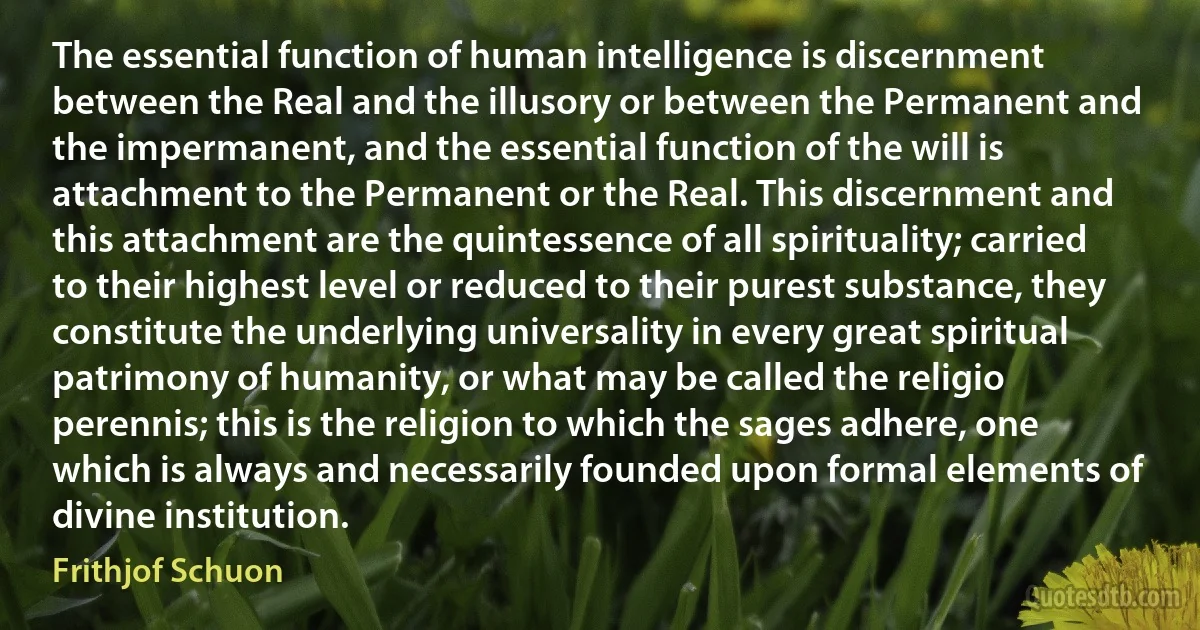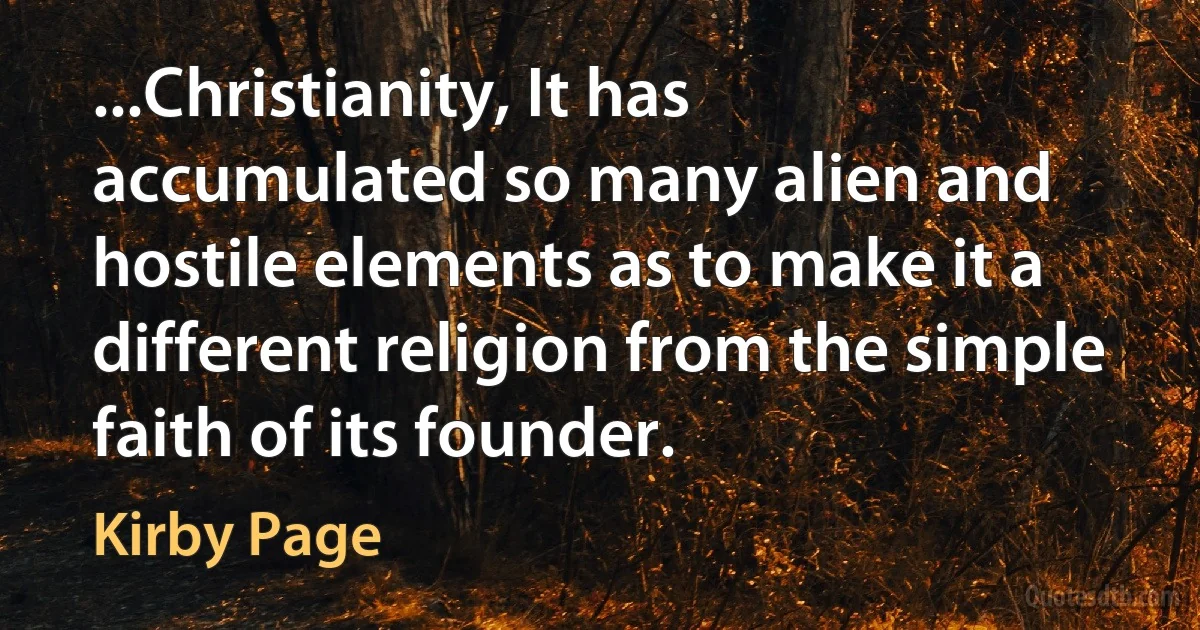Elements Quotes - page 51
The moment a robber sees a policeman he is terrified. A policeman is a terrorist for the robber. Similarly every Muslim should be a terrorist for the antisocial elements of society, such as thieves, dacoits [bandits] and rapists. Whenever such an anti-social element sees a Muslim, he should be terrified.

Zakir Naik
To this I can only reply as follows: Your point of view - taken as theoretical possibility - is incontestable. For me, however, the expectation that the adequate formulation of the universal laws involves the use of all conceptual elements which are necessary for a complete description, is more natural. It is furthermore not at all surprising that, by using an incomplete description, (in the main) only statistical statements can be obtained out of such description. If it should be possible to move forward to a complete description, it is likely that the laws would represent relations among all the conceptual elements of this description which, per se, have nothing to do with statistics.

Albert Einstein
Actually, when you have been in the country for a long time... whether it's an Indian kid going to live in California working in a software company or whether its me coming to live here as historian and writer; to a certain extent you become a part of the country, and to a certain extent you remain always the person you were with the set of circumstances, history or personal history. So, I don't think I can ever totally become Indian, but after twenty years I have certainly taken many of the Indian elements. In fact I am sitting talking to you right now in my cotton pajamas and at lunch time I will probably have dal and rice. In various ways I have taken on the life of Delhi; I think I am in the lucky position, in that I can talk to both worlds.

William Dalrymple (historian)
In trying to analyse the various elements in the Congress, the dominating position of Gandhiji must always be remembered. He dominates to some extent the Congress, but far more so he dominates the masses. He does not easily fall in any group and is much bigger than the so-called Gandhian group. That is one of the basic factors of the situation. The conscious and thinking Leftists in the country recognise it and, whatever their ideological or temperamental differences with him, have tried to avoid anything approaching a split. Their attempt bas been to leave the Congress under its present leadership, which means under Gandhiji's guidance, and at the same time to push it as far as they could more to the left to radicalise it, and to spread own ideology."

Jawaharlal Nehru
These are white workers, neither rich nor poor, but angry over economic insecurity, unhappy with their work, worried about their neighborhoods, hostile to government-combining elements of racism with elements of class consciousness, contempt for the lower classes along with distrust for the elite, and thus open to solutions from any direction, right or left.

Howard Zinn
The Constitution of the United States recognizes the slaves, held within some of the States of the Union, only in their capacity of persons - persons held to labor or service in a State under the laws thereof - persons constituting elements of representation in the popular branch of the National Legislature - persons, the migration or importation of whom should not be prohibited by Congress prior to the year 1808. The Constitution no where recognizes them as property. The words slave and slavery are studiously excluded from the Constitution. Circumlocutions are the fig-leaves under which these parts of the body politic are decently concealed. Slaves, therefore, in the Constitution of the United States are recognized only as persons, enjoying rights and held to the performance of duties.

John Quincy Adams
Minds differ in the vividness with which they recall the elements of previous experience, and mentally see the absent objects; they differ also in the aptitudes for selection, abstraction, and recombination: the fine selective instinct of the artist, which makes him fasten upon the details which will most powerfully affect us, without any disturbance of the harmony of the general impression, does not depend solely upon the vividness of his memory and the clearness with which the objects are seen, but depends also upon very complex and peculiar conditions of sympathy which we call genius.

George Henry Lewes
Yet, if such a being, who reversed the maxim nihil humani me alienum puto [nothing human is foreign to me], cannot be loved, as little can he be abhorred or despised. He was, in spite of the atrophy or non development of many of the faculties which are found in those in whom the "elements are kindly mixed," as truly a genius as the mere poets, painters, and musicians, with small intellects, and hearts and large imaginations, to whom the world is so willing to bend the knee.

Henry Cavendish
Last year, when the need to form a fact-finding team to undertake a thorough investigation concerning the hidden elements involved in September 11 incident was brought up; an idea also endorsed by all independent governments and nations as well as by the majority in the United States, my country and myself came under pressure and threat by the government of the United States. Instead of assigning a fact-finding team, they killed the main perpetrator and threw his body into the sea. Would it not have been reasonable to bring to justice and openly bring to trial the main perpetrator of the incident in order to identify the elements behind the safe space provided for the invading aircraft to attack the twin world trade towers? Why should it not have been allowed to bring him to trial to help recognize those who launched terrorist groups and brought wars and other miseries into the region? Is there any classified information that must be kept secret?

Osama bin Laden
While we can see Snowden's experience as an instructional primer on both the value of whistleblowers and the costs of vilifying them, there are elements of his story-fed by the character assassination reprisal tactics of the government-that perpetuate many of the misperceptions about whistleblowers and contribute to the view that whistleblowers are problems to be addressed, rather than potential solutions. Snowden's case also typifies the most egregious manifestations of the institutional belief that whistleblowers are problems to be addressed rather than sources of risk management and mechanisms for promoting compliance-the focus on the "messenger” rather than the "message.”.

Edward Snowden
Political self-government, central and local, was an English invention, imported into Scotland by the Grey Ministry, but intensely popular in spite of its foreign origin. Although in temper, creed and outlook on life the Scottish people were less submissive than the English, the civil institutions of their country contained in 1830 no elements of popular election such as always existed here and there in the south of the island. There was no safety-valve for all that pent energy. The Reform Bill, in England an evolution, in Scotland was a revolution, veiled in form of law, and the passions aroused over it had been proportionately more fierce.

G. M. Trevelyan
..it [the large painting 'Bathers at Asnieres', by Georges Seurat was painted in great flat strokes, brushed one over the other, fed by a palette composed, like Delacroix's, of pure and earthy colors. By means of these ochres and browns the picture is deadened, and appears less brilliant than those the impressionists paint with a palette limited to prismatic colors. But the understanding of the laws of contrast, the methodical separation of elements - light, shade, local color, and the interaction of colors - and their proper balance and proportion, give this canvas its perfect harmony.

Paul Signac
How can art be realized? Out of volumes, motion, spaces bounded by the great space, the universe. Out of different masses, tight, heavy, middling - indicated by variations of size or color - directional line - vectors which represent speeds, velocities, accelerations, forces, etc...- these directions making between them meaningful angles, and senses, together defining one big conclusion or many. Spaces, volumes, suggested by the smallest means in contrast to their mass, or even including them, juxtaposed, pierced by vectors, crossed by speeds. Nothing at all of this is fixed. Each element able to move, to stir, to oscillate, to come and go in its relationships with the other elements in its universe. It must not be just a fleeting moment but a physical bond between the varying events in life. Not extractions, but abstractions. Abstractions that are like nothing in life except in their manner of reacting.

Alexander Calder
Ethically and morally, man has also made progress. From the earliest dawn of recorded history strong men made slaves of the weak. Primitive man regarded woman much as he did a slave or an animal, an instrument through which his comfort and pleasure might be increased. Contrast the former custom of exposing infants, the aged, and the helpless to the elements or to wild beasts, when their presence became a burden, with the present practice of erecting orphans' homes, homes for the aged, and asylums for the helpless.

Kirby Page
Incomplete knowledge of the future, and also of the past of the transmitter from which the future might be constructed, is at the very basis of the concept of information. On the other hand, complete ignorance also precludes communication; a common language is required, that is to say an agreement between the transmitter and the receiver regarding the elements used in the communication process...
[The information of a message can] be defined as the 'minimum number of binary decisions which enable the receiver to construct the message, on the basis of the data already available to him.' These data comprise both the convention regarding the symbols and the language used, and the knowledge available at the moment when the message started.

Dennis Gabor
We speak of concrete and not abstract painting because nothing is more concrete, more real then a line, a colour, a surface. A woman, a tree, a cow; are these concrete elements in a painting? No. A woman, a tree and a cow are concrete only in nature; in painting they are abstract, illusionistic, vague and speculative. However, a plane is a plane, a line is a line and no more or no less than that. 'Concrete paintin'. Spirit has arrived at the age of maturity...

Theo van Doesburg
The RKM professes a syncretism, combining elements from different religions. Ramakrishnaism is the syncretism par excellence, affirming "all” religions to be true. As the Church Fathers wrote, syncretism is typical of Paganism. The Roman-Hellenistic milieu in which the first Christians had to function, was full of syncreticism, with Roman matrons worshipping Isis with the babe Horus (an inspiration for the image of Mary holding the babe Jesus), legion soldiers worshipping Persian-originated Mithras, and imperial politicians worshipping the Syrian-originated Sol Invictus... Against this syncretism, they preached religious purity: extra ecclesiam nulla salus, outside the Church no salvation. They had no problem admitting that Paganism was naturally pluralistic, but what is the use of choosing between or combining different kinds of falsehood?

Koenraad Elst
My father, in my earliest childhood, taught me the rudiments of arithmetic, and about that time made me acquainted with the arcana; whence he had come by this learning I know not. This was about my ninth year. Shortly after, he instructed me in the elements of the astronomy of Arabia, meanwhile trying to instill in me some system of theory for memorizing, for I had been poorly endowed with the ability to remember. After I was twelve years old he taught me the first six books of Euclid, but in such a manner that he expended no effort on such parts as I was able to understand by myself.
This is the knowledge I was able to acquire and learn without any elementary schooling...

Gerolamo Cardano



